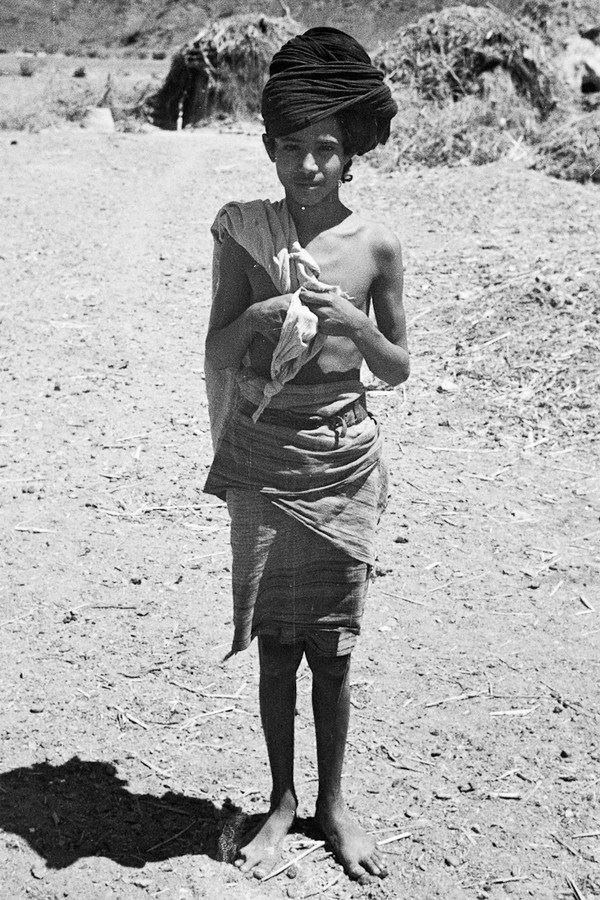
Yemeni Traditional Garments

Figure 1.--This photograph of a Yemeni boy was taken in the Dhale Governorate in Yemen, this is an administration district north of Aden. It is dated October 1945. Notice the destimctive turban. He would be a boy from the lower classes. It is unclear just what proportion of the population were in a similar state. He lived in an agriculgural area, but you cn tell from the background that yield would not be high. This of course affected the income of both the farm workers and land owners. Th boy does not look very well fed.
|
|
Traditional Arab styles appear to be very common in Yemem. We do not have much information on these traditional styles. 'Thawb' is the standard Arabic word for 'a garment'. It is also the traditional Arabian clothing for men. It is sometimes spelled thobe or thaub. It is a tunic, generally long. I the case of the boy here, the thwab is short (figure 1). This probably relects poverty. The word Thawb is used specifically for this garment in Arab States of the Persian Gulf and some areas in southern Egypt. Simililar garments are worn throughout southern Asia and Southeast Asia. As they are just anbuntailred texile tied on with knots, they are the most inexpoensive garment imginable. Of course the well-to-do can afford fine fabrics and decoration. here are regional differences. The clothing thus varies by area. The principal regional differences are colors and designs. Clothing is affected by factors like religion, weather and raditions. Islam thgrough the Koran does not establish certain styles and garments. It does strongly promote the idea of modesty. This affects women's clothing more than men's clothing. One of the most important traditioinal garments in Yemen is the Thobe. This is a tailor made white robe. A destinctive Yemeni accessory is the Jambia. It is composed of three part., the first is the Jambia itself, a curved steel blade. The handle of the blade is usually made from the horns of animals--rhinoseous is especially popular. The second is Asib. This is the case that holds the blade. The third part is the Mahazaq or Hisam. This is the belt which carries the blade and case. The whole set is callthe Jambia to stress the importance of the blade and handle. These Jambia in many cases are pasdsed doiwn from generation to generation. Yemen is avery poor country. It does not have important oil resources. And without oil, most Arab countries were poor. There is no sigificant manufacturing, in art because the population is not well educated. Agricultural yields as can be seen here are relatively low because of the lack of fertile land and water. We see children in rags unil after World WarII. The situation is better tody than it was, but the country remains very poor. And of course income affects the clothing the people wear.
HBC

Navigate the Boys' Historical Clothing Web Site:
[Return to the Main Yemeni garment page]
[Return to the Main Yemeni page]
[Return to the Main Middle Eastern page]
[Return to the Main Middle Eastern history page]
[Introduction]
[Activities]
[Biographies]
[Chronology]
[Clothing styles]
[Countries]
[Topics]
[Bibliographies]
[Contributions]
[FAQs]
[Glossaries]
[Images]
[Links]
[Registration]
[Tools]
[Boys' Clothing Home]
Created: 5:24 AM 1/8/2011
Last updated: 11:51 PM 1/5/2018



